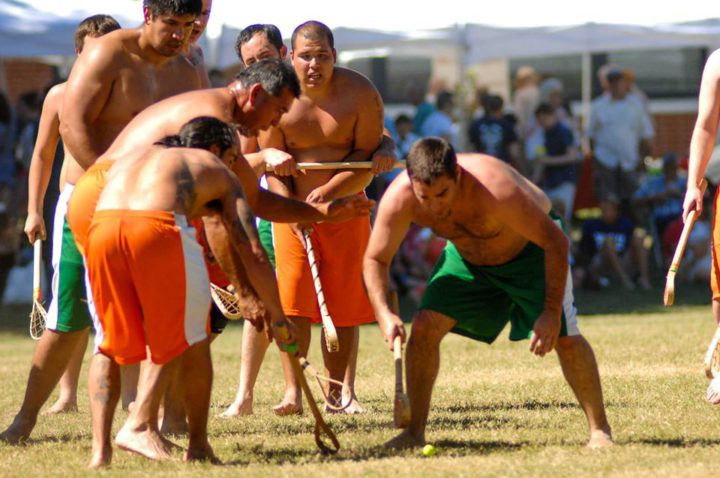BY TREY ADCOCK
Indigenous Peoples Day is less than a month away, and now seems like a good time to start reflecting on what that might mean for people in and around Asheville.
In the last few years, the city has been out in front of some issues pertaining to Indigenous people. In 2016, City Council was among the earliest in the country to adopt a resolution in support of water protectors at Standing Rock, who were protesting construction of the Dakota Access Pipeline on Sioux treaty lands. That same year, City Council voted unanimously to abolish Columbus Day in favor of celebrating Indigenous Peoples Day on the second Monday of every October. The resolution recognized that the city was “built upon the homelands and villages of the Indigenous Peoples of this region” and declared that “Indigenous Peoples Day shall be an opportunity to celebrate the thriving culture and values of Indigenous Peoples of our region.” This form of acknowledgment is important, and the city should be lauded for its efforts — but unless there is a sustained commitment to highlight both Indigenous people and issues in the city, then ultimately these efforts fall short.
Land acknowledgments
This reminds me a lot of the current conversation around land acknowledgment statements. At a basic level, land acknowledgment is a recognition that you are on the lands, for various purposes, of an Indigenous people. The statements originated in Australia before becoming common practice in Canada and now in the United States. Universities have been the main theater, but church groups, community organizations, museums, nonprofits and K-12 schools have begun to either ask about land acknowledgments or issue their own versions of these short statements. Some commemorate them with plaques or banners. For me, it is a complicated conversation because, for one, Indigenous people have been recognizing their unique relationship to the land for thousands of years, and two, this was not done through perfunctory statements. Acknowledgment was and is an everyday part of a dynamic, reciprocal relationship with the land.
The value of land acknowledgments is up for debate, with some arguing that these statements are tokenizing and trivial, and others seeing them as the first step toward reconciliation. At their best, perhaps, they move the needle and shift consciousness slightly. I tend to be skeptical, but I do think at UNC Asheville, we’re seeing some positive traction after the university formally adopted a land acknowledgment statement in fall 2020 (avl.mx/ahl).
Significantly, the Faculty Senate not only formally adopted the statement but also provided concrete recommendations for the university to move from acknowledgment to action, including hiring more Native faculty, expanding curriculum opportunities for students to learn about Indigenous peoples and suggesting scholarships for Native students, to name a few. UNC Asheville’s Staff Council also adopted the statement and has engaged in a variety of conversations about how to best integrate steps to support Indigenous students on campus.
A shift in consciousness
The results of these conversations are making their way into spaces across campus in small but important ways. One group recommended including the land acknowledgment statement in the freshman reader; various faculty members have begun including the statement in their syllabuses; and it is now being read at convocation and graduation. A collaborative group of faculty and staff is currently engaged in a semester-long learning circle on the topic. While these may be small steps and are not going to restore Indigenous lands anytime soon or directly resolve many of the issues that confront Native Nations, I do see a slight shift in consciousness on campus. That’s important to celebrate. The challenge will be to continue to think of ways to leverage the resources, including those that are land-based, of the university to positively impact Indigenous students and communities in ways that are relevant for them.

In a more visceral approach, I really appreciate what the Center for Craft is doing with its Cherokee Basketry Public Art Parklet project (avl.mx/ahm). The center is interrupting the physical space, in a Debordian sense, of Asheville as a form of recognition. Known as “The Basket,” the structure will transform the block surrounding 67 Broadway into a cultural gateway and welcome visitors into To Ki Ya Sdi, “The place where they race,” or Asheville, as it is more popularly known. A specific goal of this project is to challenge the lack of Cherokee representation in downtown Asheville.
Cherokee basketry materials, structure, colors, patterns and use are integrated throughout the parklet’s design. The concept is being driven by input from Cherokee master basket maker Mary Thompson, along with a committee of Cherokee educators and community members. A central task of the group has been integrating educational text in both the Cherokee syllabary and in English, regarding language, culture, history and the importance of rivercane to traditional basket making. There’s a lot to be learned from a process that not only acknowledges the land and the original people but also demonstrates the willingness to give up control at some level.
Whom are we serving?
For groups in and around Asheville, when it comes to constructing a land acknowledgment statement, an essential question to ask is: Whom are we serving through this process?
For some, a land acknowledgment statement alone won’t be enough. While I agree with that sentiment, I do think it can be a starting place if done appropriately. An immediate action step to consider for groups, organizations and institutions interested in crafting a land acknowledgment is to honestly examine every part of their processes. Who is making decisions? Are the organization’s processes inclusive? Who determines how budget resources are spent? How can the organization’s values and resources align with Indigenous communities?
If Indigenous people are not involved in any of those processes and values are not aligned, a land acknowledgment is only going to go so superficially far. A second but related form of inquiry is understanding how the organization’s resources are benefiting or possibly harming Indigenous communities. A difficult question to confront is whether your organization is still benefiting from or helping perpetuate land dispossession. Anyone who has read about the troubling history of many land-grant universities can attest to this. For those interested in drafting a land acknowledgment for their organizations, the Native Governance Center (avl.mx/ahn) is a good source.
For individuals, allies and those who continue to push for change, moving into action includes doing the hard work of understanding current matters impacting Indian Country. These subjects, such as current court challenges to the Indian Child Welfare Act or current policies that perpetuate the epidemic of violence against Native women, might not be the romanticized topics that many people associate with Indigenous people in this country, but they are issues that Native Nations face every day. As we collectively move to recognize Indigenous Peoples Day in Asheville, my hope is that actual Indigenous people and the issues they confront are at the forefront of what we do, how we reflect and how we acknowledge the deep responsibility we have to the land we inhabit.
Note: The views represented in this piece are mine alone. I do not speak for any other Cherokee person, only myself as a citizen of Cherokee Nation, living and working in To Ki Ya Sdi, “The place where they race.”
Trey Adcock, ᏣᎳᎩᎯ ᎠᏰᎵ, Cherokee Nation, is an associate professor at UNC Asheville, where he serves as director of American Indian & Indigenous Studies. He also plays stickball for the Wa Le La Hummingbird team.



Before you comment
The comments section is here to provide a platform for civil dialogue on the issues we face together as a local community. Xpress is committed to offering this platform for all voices, but when the tone of the discussion gets nasty or strays off topic, we believe many people choose not to participate. Xpress editors are determined to moderate comments to ensure a constructive interchange is maintained. All comments judged not to be in keeping with the spirit of civil discourse will be removed and repeat violators will be banned. See here for our terms of service. Thank you for being part of this effort to promote respectful discussion.